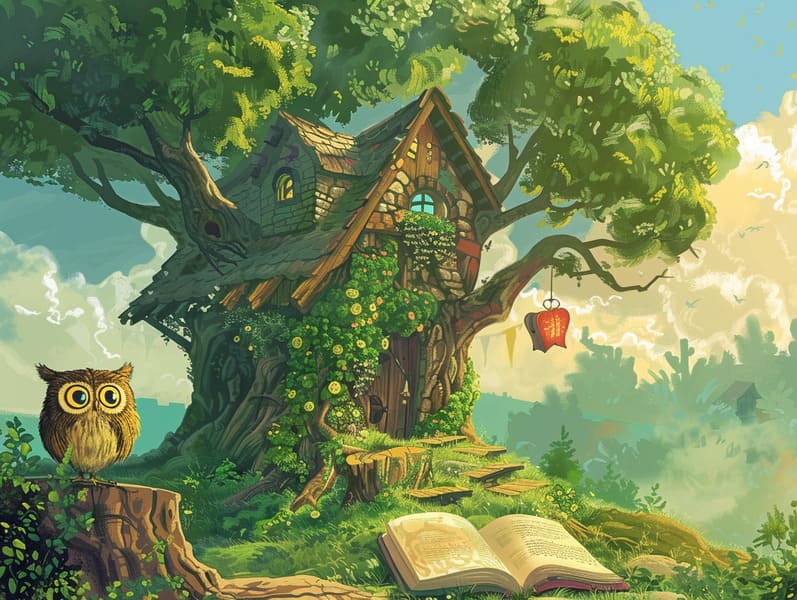The Journey of Historical Fairy Tales and Its Consistent Mystique.
The Journey of Historical Fairy Tales and Its Consistent Mystique.
Blog Article

Famous fairy tales have deep roots. These narratives have been narrated from one generation to the next ages before they were ever documented. They came from a variety of societies, including Eastern traditions. They were initially told among older generations, often carrying themes and messages pertaining to the societal norms and beliefs of the time.
The Brothers Grimm, Jacob and Wilhelm, were among the first to gather many of these beloved stories. Their volume, "Grimm's Folk Tales," included tales like "Cinder Maid," "Hansel and Gretel," and "Snow-White and Rose-Red," which have since become staples in the world of timeless fairy tales. Similarly, Hans Andersen's charming tales, such as "The Little Mermaid," and "The Ugly Duckling," have captivated hearts worldwide, solidifying their place in the pantheon of famous fairy tales.
Though they are old, these stories remain as significant as ever, especially as bedtime stories for kids. These charming stories are now available in multiple formats, including artistically illustrated books, delightful animations, and digital storybooks.
Their persistent charm can be credited to several whimsical characteristics:
Significant Morals: Old fairy tales often whisper important moral lessons. Tales like "The Story of the Boy Who Cried Wolf" teach the merit of integrity, while "The Tale of the Tortoise and the Hare" point out the merits of tenacity and meekness. These tales offer children clear distinctions between correct and incorrect, helping to shape their moral compass in a mild yet important way.
Compassion and Knowledge: Classic fairy tales frequently include individuals facing trials and tribulations, motivating kids to resonate with their struggles and back their triumphs. For instance, "The Story of Beauty and the Beast" reveals the importance of appreciating inner worth to perceive the true character of a person, promoting empathy and perception.
Cultural Recognition: Many traditional fairy tales are rooted in the cultural contexts from which they came. Engaging with these tales can provide captivating looks into different societies, nurturing a sense of cultural respect and appreciation.
Fantasy and Imagination: The imaginative elements in fairy tales—magical beings—promote children’s fantastical thinking. These tales take readers to fantasy realms, enhancing innovative thinking and a sense of amazement that lasts a lifetime.
Ancient fairy tales are not only spellbinding but also enlightening. They provide mesmerizing tools in enhancing various cognitive and emotional skills in little ones. When traditional fairy tales are narrated, they advance verbal skills by teaching new lexicon and detailed sentence structures. This practice also boosts listening abilities and attentiveness, as little ones hang on every word, looking forward to see what happens next.
Furthermore, read more exploring the themes and characters of old fairy tales can nurture cognitive skills and cognitive skills. Children are educated to spot patterns, forecast, and figure out cause and effect. These explorations also boost little ones articulate their thoughts and feelings, cultivating their emotional intelligence.
In today’s digital era, the presence of free fairy tales online has made these tales more accessible than ever. Digital sites and web apps feature ample collections of timeless fairy tales that can be read or heard anytime, anywhere. Fairy tales narrated are particularly common, extending an captivating way for kids to appreciate these enchanting tales. Narrated books and read-aloud videos guide characters and settings to life, often joined by charming sound effects and songs that raise the tale-telling adventure.
The timeless fascination of classic fairy tales lies in their ability to shift to contemporary times while preserving their key morals. Contemporary versions of these tales often present more multicultural protagonists and modern settings, making them accessible to today’s audience. However, the key lessons of bravery, kindheartedness, and even-handedness remain unchanged, continuing to resonate with young readers of all ages.
Old fairy tales also offer a sense of familiarity and predictability. They bequeath a methodical narrative with a transparent beginning, middle, and end, often coming to a close with the resolution of conflicts and the triumph of rightness over wrongness. This uniformity can be encouraging for little ones, distributing a sense of stability in an shifting world.
Ancient fairy tales continue to delight and guide new generations, maintaining their delight and impact in modern society. As nighttime stories for kids, they grant a perfect blend of delight and instruction, cultivating moral values, empathy, and creativity. The availability of digital storybooks and the well-liked nature of fairy tales read out loud make sure that these timeless narratives remain attainable to new generations.
By holding onto and recounting these narratives, we continue to commemorate the rich tapestry of fantasy and cultural heritage. Whether you are enjoying a beautifully illustrated book, discovering a digital library, or listening to an sound book, the appeal of timeless fairy tales is always within reach. These tales show us of the everlasting magic of stories and its ability to bind us across generations and cultures.
Be it you are experiencing a artistically illustrated book, accessing a online collection, or listening on an spoken story, the splendor of popular fairy tales is always within reach.
These stories show us of the unchanging power of fairy tales and its ability to link us across eras and regions, forging a link that fascinates and enlightens alike.